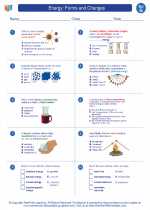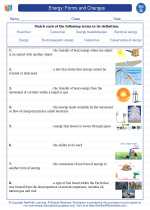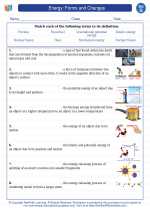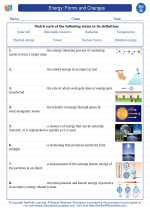Energy: Forms and Changes -> environment
Environment
The environment refers to the surroundings in which an organism, species, or community lives and interacts. It includes both biotic (living) and abiotic (non-living) components, such as plants, animals, air, water, and soil.
Key Concepts to Understand:
- Ecosystem: An ecosystem is a community of living organisms (biotic) interacting with the non-living (abiotic) components of their environment. This interaction forms a system where energy is transferred and nutrients are cycled.
- Biodiversity: Biodiversity refers to the variety of life forms in an ecosystem. It includes diversity within species, between species, and of ecosystems.
- Ecological Footprint: The ecological footprint is a measure of human demand on the Earth's ecosystems. It represents the amount of biologically productive land and sea area needed to provide the resources a person or population consumes and to absorb the waste they generate.
- Conservation: Conservation involves the protection and preservation of natural resources and the environment. It aims to maintain the diversity of species and ecosystems for future generations.
- Climate Change: Climate change refers to significant and long-term changes in the Earth's climate. It is largely driven by human activities, such as the burning of fossil fuels, deforestation, and industrial processes.
Study Guide:
1. What is the difference between biotic and abiotic components of the environment?
The biotic components of the environment are the living organisms, such as plants, animals, and microorganisms. The abiotic components are the non-living factors, including air, water, sunlight, soil, and temperature.
2. How does energy flow through an ecosystem?
Energy enters an ecosystem through sunlight and is captured by plants during photosynthesis. This energy then flows through the food chain as organisms consume each other, with some energy being lost as heat at each trophic level.
3. Why is biodiversity important for ecosystems?
Biodiversity is important for ecosystems because it contributes to ecosystem stability, resilience, and productivity. It also provides a variety of ecosystem services, such as pollination, nutrient cycling, and pest control.
4. What are some actions individuals can take to reduce their ecological footprint?
Individuals can reduce their ecological footprint by conserving energy, using public transportation, consuming sustainable products, reducing waste, and supporting conservation efforts.
5. How does human activity contribute to climate change?
Human activity contributes to climate change through the release of greenhouse gases, such as carbon dioxide and methane, from burning fossil fuels, deforestation, and industrial processes. These gases trap heat in the Earth's atmosphere, leading to global warming and other climate-related changes.
For further study and exploration of the environment, consider researching specific ecosystems, conservation initiatives, and the impacts of climate change on different regions of the world.
.◂Science Worksheets and Study Guides Seventh Grade. Energy: Forms and Changes

 Worksheet/Answer key
Worksheet/Answer key
 Worksheet/Answer key
Worksheet/Answer key
 Vocabulary/Answer key
Vocabulary/Answer key
 Vocabulary/Answer key
Vocabulary/Answer key
 Vocabulary/Answer key
Vocabulary/Answer key
